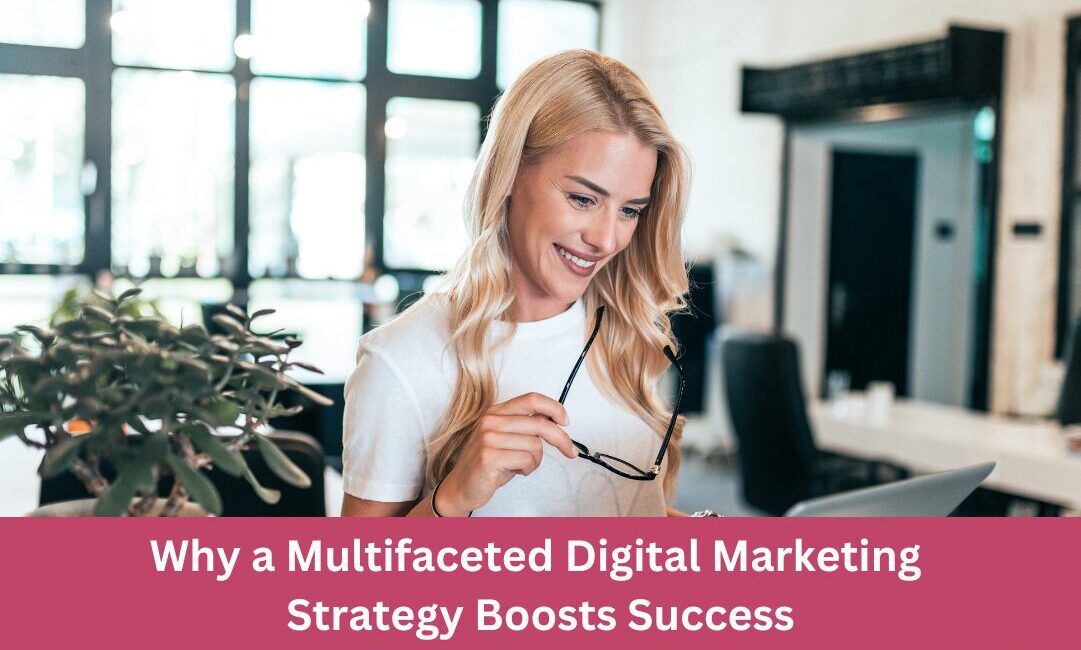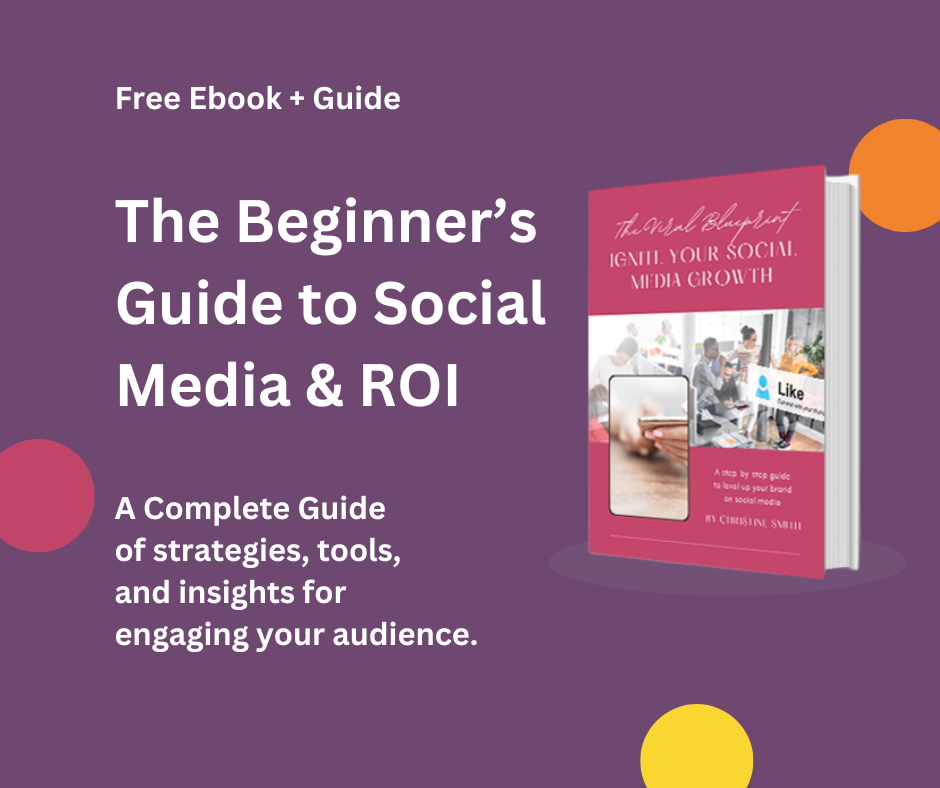Digital marketing is often misunderstood. Some business owners consider it a single task, like posting on social media, emailing, or running an ad campaign. But in reality, digital marketing is an intricate system comprising many interdependent elements, including SEO, email marketing, PPC advertising, content creation, social media management, analytics, and more. Each component ensures your business stays visible, attracts customers, and drives revenue.
If you’re feeling stuck by all the various tasks that fall under digital marketing, you’re not alone. Many businesses struggle to keep up with the ever-changing digital marketing world. The good news? There is a way to effectively manage and implement a successful strategy without burning out.
Understanding the Many Components of Digital Marketing
To create a strong digital presence, you must incorporate a multifaceted approach. Let’s break down the essential elements:
1. Search Engine Optimization (SEO)
SEO ensures that your website appears on page one of search results when potential customers look for your services. It involves keyword optimization, backlink building, on-page SEO, and technical SEO. Your target audience might never find your website without a solid SEO strategy.
We can now incoporate AI to automate tasks, analyze data, and optimize content more effectively. It helps with keyword research by identifying high-value search terms and suggesting related keywords. AI also helps create and optimize content, generate meta tags, and suggest internal links for better site structure. Although AI cannot replace the human touch, it does help humans be more efficient. Additionally, AI-powered tools can perform technical SEO audits, detect crawl errors, and improve page speed.
AI also improves user experience by analyzing behavior, predicting content preferences, and optimizing websites for voice search. AI tools can monitor backlinks, identify high-quality link opportunities, and manages Google My Business listings for better local SEO. AI also generates detailed performance reports and adjusts SEO strategies in real time to adapt to changes in the algorithm. Incorporating AI-powered SEO helps companies boost their online presence and drive more organic traffic efficiently. The caveat to be aware of with SEO is that it takes time. SEO is not a quick fix.
Quick Tip: Consistency is key in SEO. While AI can accelerate optimization and provide valuable insights, maintaining a regular schedule for updating content, auditing technical SEO, and monitoring keyword trends ensures long-term success. Don’t expect instant results—commit to the process for sustained growth!
2. Pay-Per-Click (PPC) Advertising
PPC advertising, like Google Ads, Facebook Ads, LinkedIn Ads, and Bing Ads, allows you to gain immediate traction on your website by placing targeted ads in front of potential customers. Unlike SEO, which takes time to build and requires ongoing content development, PPC campaigns provide immediate traffic and can generate leads and increase sales.
With PPC Ads, businesses bid on specific keywords relevant to their products or services. When users search for the keywords or engage with related content, the ads appear at the top of search results or within their social media feeds. This targeted approach guarantees that your business reaches the right audience at the right time, maximizing the chances of conversion.
PPC platforms also provide thorough reporting for tracking and measuring ad performance. You can track key performance indicators (KPIs) like impressions, clicks, ROI, and conversion rates to improve your ad strategy.
When done right, PPC advertising can be a game-changer for companies seeking scalable lead generation and quick wins. However, to guarantee long-term profitability, PPC advertisements need constant upkeep, optimization, and tactical modifications.
Quick Tip: To prevent excessive spending, focus on keywords likely to drive the user to act and establish a reasonable budget. By A/B testing various ad variations, you can improve performance and refine your messaging.
3. Email Marketing
One of the digital marketing tactics with the highest return on investment is email marketing, which routinely outperforms other channels in terms of engagement and conversion rates. A well-designed email campaign increases retention, builds stronger customer relationships, nurtures leads, and encourages repeat business.s. By delivering the right message when the prospect has a pain point, companies can guide prospects through the sales funnel, keeping their brand top-of-mind and increasing long-term loyalty.
Personalization and automation are essential to maximize effectiveness. Personalized emails—addressing recipients by name, tailoring content based on user behavior, and recommending products or services based on past interactions—significantly increase open and click-through rates. Automation streamlines this process, ensuring that welcome sequences, abandoned cart reminders, and follow-ups are sent at optimal times without manual effort.
Quick Tip: Use tools such as HubSpot, ActiveCampaign, or MailChimp to divide your audience into groups according to their demographics, past purchases, or degree of engagement. By providing timely and pertinent content, automated workflows can assist you in effectively nurturing leads, ultimately increasing conversions and revenue.
4. Social Media Management
A solid social media strategy is essential for building brand awareness, fostering customer engagement, and driving business growth. However, posting sporadically isn’t enough to stand out in today’s crowded digital landscape. You need a campaign that aligns with your business goals, audience preferences, and industry trends to make an impact. Consistency, creativity, and interaction are key to maintaining an active and engaging social media presence.
A well-structured social media strategy should include a content calendar, ensuring posts are planned and tailored differently to each platform. Each channel caters to a unique audience, so your content should be optimized accordingly. For instance, professional insights flourish on LinkedIn, short, interesting videos increase engagement on TikTok, and visual storytelling is most effective on Instagram. Engagement is essential beyond posting; using interactive content such as polls, stories, and live videos, as well as replying to comments and participating in discussions, all contribute to the development of a devoted following.
Quick Tip: Plan and automate your posts with scheduling tools like Sprout Social, Buffer, or Hootsuite. These platforms help produce a consistent flow of content without the daily burden. Additionally, monitor engagement metrics to find out what kinds of posts your audience responds to the most so you can improve your approach and increase its impact.
5. Content Marketing
Content is King, and great content fuels every aspect of digital marketing. Blog posts, videos, articles, infographics, and case studies attract and retain customers.
AI integration is a game changer for content creation. It can help create everything from blog articles to social media updates. In addition, AI integration can scan through previous creations and generate techniques for improving each piece of content to gain maximum site presence and drive more sales.
AI recognizes which headlines, images, and calls to action generate more clicks and hence makes adjustments to make the campaigns more effective. Use AI as a powerful assistant, not a replacement. While AI can analyze data, suggest keywords, and optimize content quickly, it lacks the emotional intelligence and creative nuance that resonates with human readers. Blend AI-generated insights with your unique voice, personal experiences, and storytelling to keep your audience engaged. This approach ensures your content remains relatable, authentic, and aligned with your brand’s personality. Readers connect with real stories and human perspectives, not just perfectly optimized text!
Quick Tip: Start one today if you don’t have a blog. If you have a blog, commit to writing more blog posts than you have in the past. Write on topics that will help your potential clients solve their problems. Still need help? Go to Google and begin typing what your potential clients are searching for. Look at what’s auto-populating to help with inspiration.
6. Analytics & KPI’s
In digital marketing, data-driven decision-making is the key to success. Without tracking your performance, you’re essentially operating in the unknown, unsure which strategies drive results and which ones need improvement. Analytics tools like Google Analytics, Facebook Pixel, and other tracking platforms help you understand user behavior, find trends, and measure the effectiveness of marketing campaigns. By monitoring key metrics such as traffic sources, bounce rates, session durations, and conversion rates, businesses can tweak their strategies for better engagement and higher ROI.
Beyond general website traffic insights, advanced analytics tools allow for deep segmentation—helping you see which audience groups engage the most, which pages drive the highest conversions, and where potential drop-offs occur. Additionally, when backed by real-time performance data, A/B testing different ad creatives, landing pages, and CTAs becomes easier.
Quick Tip: Set up conversion tracking using tools like Google Analytics 4, Meta Pixel, or UTM parameters to determine how well your website and advertisements convert visitors into buyers. This approach will help you see how users engage with your content and where changes can be made to maximize outcomes.
Feeling Overwhelmed? Here’s How to Simplify Your Marketing Strategy
With so many moving parts, it’s no surprise that many businesses feel overwhelmed. The key to marketing success is organization and delegation. Here’s how you can streamline your digital marketing efforts:
1. Develop a Clear Digital Marketing Strategy
Before you start executing marketing tactics, have a plan. Define your goals, target audience, and key performance indicators (KPIs).
2. Batch Your Tasks
Instead of rushing to manage ads or produce content every day, plan your marketing tasks. Allocate time on a weekly, monthly, or quarterly basis for content creation, post scheduling, and performance analysis.
3. Leverage Automation
Marketing automation tools can help you save time and increase efficiency. Email automation, social media scheduling, and chatbots are used to engage with customers.
4. Outsource to Experts
You don’t have to do everything. Leave your digital marketing to Smurk Media and focus on what you do best. We can help you with SEO, PPC advertising, content marketing, social media, website development, and even website management.
Let Smurk Media Handle Your Digital Marketing So You Can Focus on Growth
Running a business is hard enough without trying to master SEO, PPC, email campaigns, and social media all at once. Instead of feeling overwhelmed, let Smurk Media be your digital marketing partner. We specialize in helping overwhelmed businesses like yours execute strategies that work—without the stress.
Contact Smurk Media today to discuss how we can take digital marketing off your plate and help you grow your business with a streamlined, results-driven approach.
Client Testimonial
"Working with Smurk Media has been a game-changer for our business. Christine and her team took the time to understand our goals and crafted a comprehensive digital marketing strategy that included everything from website optimization and SEO to social media management and email marketing. The results speak for themselves — increased traffic, more qualified leads, and a stronger online presence. Their expertise, creativity, and responsiveness make them an invaluable partner. If you're looking for a team that truly delivers across all areas of digital marketing, Smurk Media is it!"



